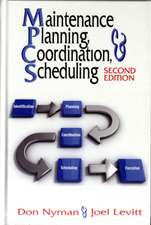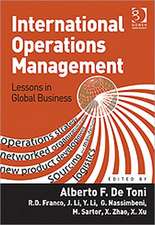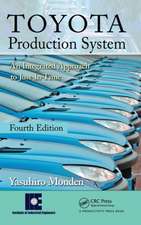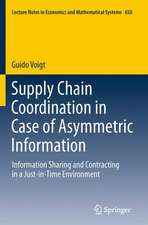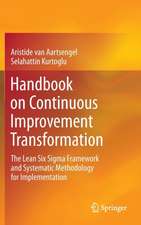The Management of Quality and its Control
Autor Charles Tapieroen Limba Engleză Paperback – 28 feb 2013
| Toate formatele și edițiile | Preț | Express |
|---|---|---|
| Paperback (1) | 950.66 lei 6-8 săpt. | |
| Springer Us – 28 feb 2013 | 950.66 lei 6-8 săpt. | |
| Hardback (1) | 956.81 lei 6-8 săpt. | |
| Springer Us – 30 dec 1995 | 956.81 lei 6-8 săpt. |
Preț: 950.66 lei
Preț vechi: 1159.34 lei
-18% Nou
Puncte Express: 1426
Preț estimativ în valută:
181.91€ • 194.52$ • 151.67£
181.91€ • 194.52$ • 151.67£
Carte tipărită la comandă
Livrare economică 17 aprilie-01 mai
Preluare comenzi: 021 569.72.76
Specificații
ISBN-13: 9781461358527
ISBN-10: 1461358523
Pagini: 428
Ilustrații: XII, 413 p.
Dimensiuni: 155 x 235 x 22 mm
Greutate: 0.59 kg
Ediția:1996
Editura: Springer Us
Colecția Springer
Locul publicării:New York, NY, United States
ISBN-10: 1461358523
Pagini: 428
Ilustrații: XII, 413 p.
Dimensiuni: 155 x 235 x 22 mm
Greutate: 0.59 kg
Ediția:1996
Editura: Springer Us
Colecția Springer
Locul publicării:New York, NY, United States
Public țintă
ResearchDescriere
Throughout the management literat ure , as elegantly trumpeted by management consultants and gurus, there seems to be a common message: tor a firm to be competitive it must produce quality goods or services. This means that firms, to remain competitive, must at the same time produce at the least cost possible to be price competitive and deli ver high quality products and services. As a result, quality has become strategie overnight, involving all, both in and out of the firm, in the management of its interfaces with clients and the environment. To give quality, suppliers, buyers, operations and marketing managers, as weIl as corporate management must become aware of the mutual relationships and inter-dependencies to which they are subjected, so that they will be able to function as a coherent whole. This involves human relations and people problems, organizational design issues, engineering design options, monitoring and control approaches and, most of all , a managerial philosophy that can integrate, monitor and eontrol the multiple elements which render the firm a viable quality producing and profitable whole. To realize the benefits of quality it is imperative that we design products to be compatible with market needs, market structure, eompetition and, of course, that we are constantly aware and abreast of consumers' tastes and the manufacturing technologies that are continuously emerging.
Cuprins
Part One: The management of quality. The concept and the definition of quality. Total quality management. Part Two: The control of quality tools. The tools of quality management. Decision making under uncertainty. Inspection and acceptance sampling. Control charts. Robust design and experiments. Part Three: Application areas. Quality management, control and services. Quality management, suppliers and contractual agreements. Strategic issues and the economics of quality. The control of quality in a temporal setting. Technology and quality management. Pot pourri.

